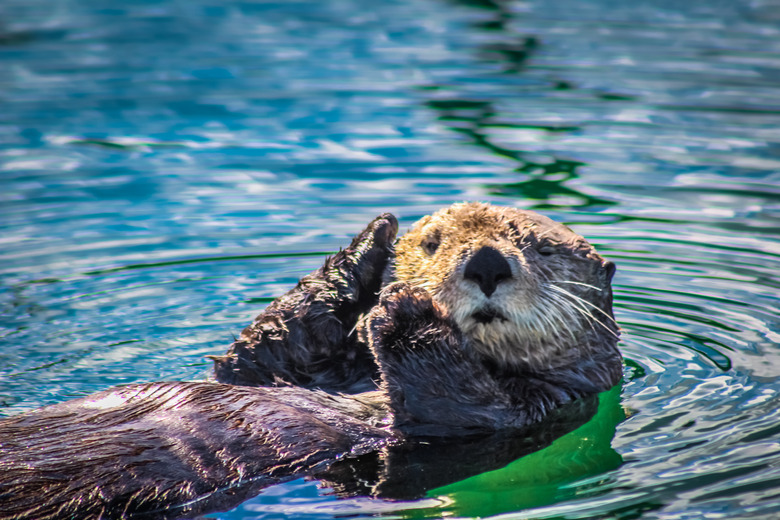How To Build An Otter Shoebox Habitat
Take a peek inside the life of an otter by creating a lifelike otter habitat inside a basic shoebox. Fill your shoebox with creativity and imagination by telling a 3-dimensional story about an adorable fur-covered mammal who can be found living in coastal marine areas, floating leisurely on his back. Tell a detailed story in a well-designed and decorated diorama that can be created easily out of basic craft supplies and treasures gathered at the beach.
Step 1
Choose how you would like to display your diorama. Your box can be placed horizontally or vertically. Your design can be inside an open box, or you can close the box and cut a peek hole in top to look inside. If you choose an open box design, consider attaching the lid with hinges made of tape. The top conceals the habitat inside, but opens fully for viewing.
Step 2
Decorate the outside of the box. Basic design includes painting it one solid color or covering it with paper. For a more detailed outer cover, make a collage out of magazine cutouts that follow the outdoor theme. Be as creative as you like with your outside design. Display a title such as "Otter Habitat", or "Shoebox Habitat".
Step 3
Design the interior of the box as a 3-dimensional design and not a flat picture. Begin with a background and work your way forward in the box, with design elements that fill up all the space. For example, your background might show a flat picture of trees leading to a beach and water. Carry the water from the background to the bottom interior of the box.
Step 4
Build the otter habitat using plasticine, dough, toys, construction paper, sticks and rocks or whatever combination of materials you choose.
Step 5
Show an accurate portrait of an otter habitat. Sea otters are dark blond to brown and covered in thick, short fur. Sea otters live in coastal marine waters, while river otters live in rivers or oceans. Otters dive for food on the bottom of the ocean. Include clams, crabs, sea urchins, squid, sea star legs. Although otters do visit the land, they are much more likely to be found in the water.
Step 6
Glue all figures, background materials and accessories in place, so that they don't shift or move.
Things Needed
- Paint
- Construction paper
- Glue
- Scissors
- Clay, dough, or other modeling medium
- Plastic sea life
- Sticks, sand, shells or other beach items
- Magazines
Cite This Article
MLA
Dermody, Jennifer. "How To Build An Otter Shoebox Habitat" sciencing.com, https://www.sciencing.com/build-otter-shoebox-habitat-8483366/. 22 November 2019.
APA
Dermody, Jennifer. (2019, November 22). How To Build An Otter Shoebox Habitat. sciencing.com. Retrieved from https://www.sciencing.com/build-otter-shoebox-habitat-8483366/
Chicago
Dermody, Jennifer. How To Build An Otter Shoebox Habitat last modified March 24, 2022. https://www.sciencing.com/build-otter-shoebox-habitat-8483366/
